Uncovering Diyarbakır's Mysteries: Exploring the Ancient Sites
Welcome to Diyarbakır, a city rich in history, culture, and mystique. Located in southeastern Turkey, this city has been inhabited since the Neolithic period and has witnessed the rise and fall of various civilizations, from the Hurrians and Assyrians to the Romans and Ottomans. Diyarbakır's fascinating history and diverse cultural heritage are reflected in its numerous ancient sites and landmarks, which have stood the test of time and continue to captivate visitors from around the world.
In this travel content, we will take you on a journey of discovery through the ancient sites of Diyarbakır, as we uncover the city's mysteries and explore its rich cultural heritage. From the imposing city walls and gates to the historic Surp Giragos Armenian Church,we will show you the best that this enchanting city has to offer. So, pack your bags, put on your walking shoes, and join us on this unforgettable adventure through the heart of Diyarbakır.
Diyarbakır City Walls
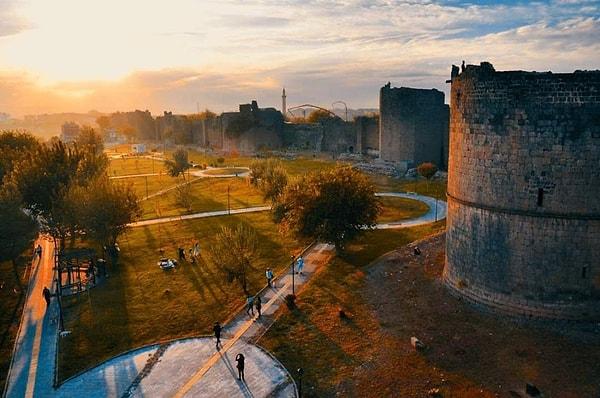
Diyarbakır City Walls, are impressive and well-preserved set of defensive walls located in the city of Diyarbakır in southeastern Turkey. These walls were built during the Roman period and expanded during the Byzantine, Abbasid, Seljuk, and Ottoman periods. They consist of an inner and outer wall with a total length of approximately 5.5 kilometers and are punctuated by 82 towers and four main gates. The walls are made of black basalt stone and are up to 12 meters high in some places. In recognition of their historical and cultural significance, the walls were designated a UNESCO World Heritage Site in 2015.
Diyarbakır City Walls has played a crucial role in the city's defense against invading armies throughout its history. They have witnessed numerous wars, conflicts, and power struggles, including the Arab-Byzantine wars, the Mongol invasion, the Crusades, and World War I. The walls are not only a testament to the city's military prowess and strategic importance but also a reflection of the diverse cultural and architectural influences that have shaped the region over the centuries. Today, the Diyarbakır City Walls is a popular tourist destination, attracting visitors from around the world who come to marvel at their impressive architecture and rich history.
Zerzevan Castle
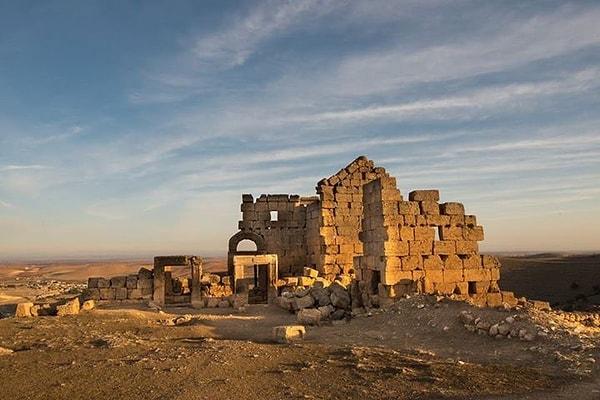
Zerzevan Castle, located in the Diyarbakır province of Turkey, is a fascinating historical site that dates back to the Roman period. The castle was constructed during the reign of the Roman Emperor Constantine the Great, between the 3rd and 4th centuries AD. Its strategic location near the Silk Road made it an important military outpost for the Roman Empire. The castle complex covers an area of over 10 hectares and features an impressive defensive wall that stretches for nearly 2 kilometers. Visitors can explore the ruins of the barracks, the baths, the stables, and the granaries that were once part of this impressive structure.
In addition to its military importance, Zerzevan Castle is also significant from an architectural perspective. The castle showcases the impressive engineering skills of the Romans, with its intricate arches, vaults, and other structural elements. Today, the site is a popular tourist destination, attracting visitors from around the world who come to marvel at the ancient ruins and learn more about the history of this important landmark. Whether you're a history buff, an architecture enthusiast, or simply someone who appreciates the beauty of ancient ruins, Zerzevan Castle is a must-visit destination in Turkey.
Malabadi Bridge

The Malabadi Bridge is a historical landmark located in the Diyarbakırr. The bridge was built during the Artuqid period, between the years 1147 and 1148, by the Artuqid ruler Fahrettin Karaaslan. The bridge spans the Batman River, which flows through the province, and is made up of seventeen arches. The bridge is a testament to the architectural skills of the Artuqid dynasty, who were renowned for their innovative engineering designs.
The Malabadi Bridge has withstood the test of time, surviving numerous floods and earthquakes, and is now one of the most important tourist attractions in the region. Visitors to the bridge can marvel at the intricate stonework and architecture that went into building this masterpiece. The bridge has also been featured in many works of art, including poems, paintings, and songs. Its cultural significance has led to its recognition as a Turkish National Monument and its inclusion on the UNESCO tentative list of World Heritage Sites. Overall, the Malabadi Bridge is a must-visit destination for anyone interested in history, architecture, or engineering.
Cemil Pasha Hall
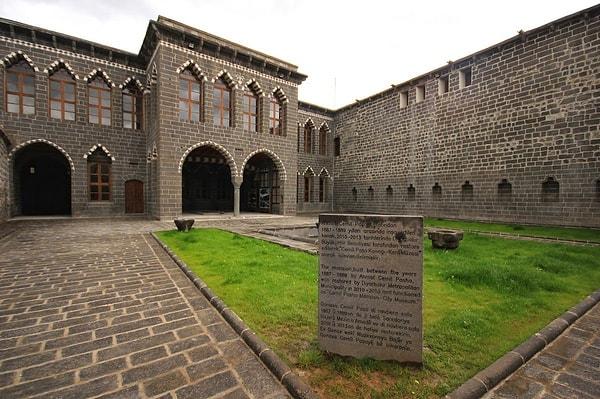
Cemil Pasha Hall is a historical building in Diyarbakir, in southeastern Turkey. The hall was built during the late Ottoman period, around the early 20th century, and served as a place for public gatherings, cultural events, and political meetings. The building is named after Cemil Pasha, an Ottoman military commander and governor of the province of Diyarbakir in the early 1900s.
The Cemil Pasha Hall is a fine example of Ottoman architecture, featuring a spacious central hall with high ceilings, intricate patterns, and elegant decorations. The building is made of stone and features a large dome-shaped roof, which adds to its grandeur and beauty. Despite undergoing some renovations and restorations over the years, the hall has managed to preserve its original character and remains an important symbol of the city's cultural heritage and history. Today, the hall is used for various cultural and artistic events, including concerts, exhibitions, and festivals, and is considered one of the most popular and important cultural venues in the region.
Great Mosque of Diyarbakır
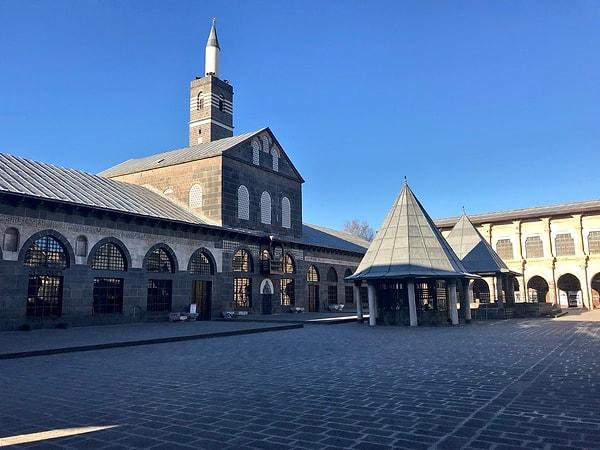
Great Mosque of Diyarbakır is a significant religious and cultural site located in the historic city of Diyarbakır, Turkey. The mosque, which is also referred to as the Ulu Cami, was built in the 11th century and is one of the oldest and largest mosques in Turkey. The structure has undergone several renovations and expansions over the years, with the most recent restoration taking place in the 1980s. The mosque's architecture is a combination of Seljuk and Ottoman styles, with intricate decorations and calligraphy adorning its walls and ceilings. The Diyarbakır Grand Mosque is an important landmark for both the city's Muslim community and its cultural heritage.
The mosque's main prayer hall is a large, rectangular space that can accommodate up to 5,000 worshippers. The hall is supported by 40 pillars and features a stunning mihrab (prayer niche) adorned with intricate floral motifs and calligraphy. The mosque's courtyard, which is surrounded by a colonnade of arches, also serves as a gathering place for worshippers and visitors. The mosque is open to visitors of all faiths, and guided tours are available to provide insight into the history and significance of the structure. The Diyarbakır Grand Mosque is a testament to the city's rich cultural heritage and serves as an important symbol of Diyarbakır's enduring Islamic identity.
Sülüklü Han
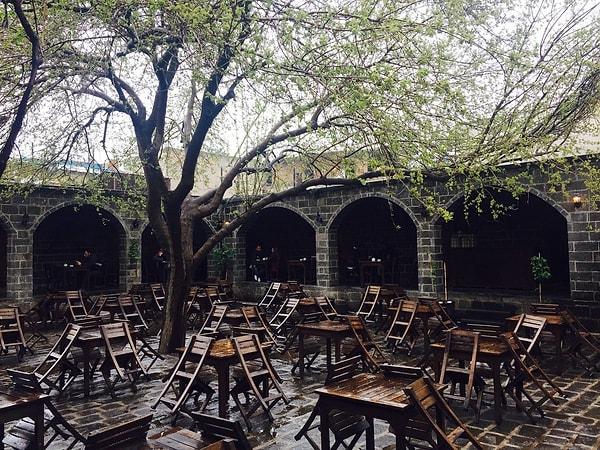
Diyarbakır Sülüklü Han is a historical caravanserai located in the heart of Diyarbakır. The han was built during the 16th century and has since become a popular tourist attraction due to its unique architecture and historical significance. The name 'Sülüklü Han' comes from the fact that leeches were once sold in the han's courtyard as a medical treatment. Today, the han is home to various shops, restaurants, and cafes where visitors can experience the local culture and cuisine.
The han's architecture is a perfect example of traditional Ottoman design, featuring high arches, intricate brickwork, and a large courtyard in the center. The courtyard is surrounded by two floors of rooms and is accessible through four large gates. Each gate is decorated with beautiful calligraphy and ornate designs, adding to the han's beauty and grandeur. Visitors to Diyarbakır Sülüklü Han can explore the various shops and stalls, sample traditional Turkish cuisine, or simply soak in the historical and cultural significance of this incredible structure.
Behram Pasha Hall

Diyarbakır Behram Pasha Hall is a historical building located in the city of Diyarbakır. The building was constructed in the 16th century by Behram Pasha, who was the governor of the region during the Ottoman Empire. The hall is a classic example of Ottoman architecture, with its ornate arches, intricate decorations, and spacious interior. It was originally built as a place for Behram Pasha to hold meetings and entertain guests, and it has since served a variety of functions throughout its history. Today, it is primarily used as a cultural center and museum, showcasing the rich history and heritage of the region.
Diyarbakır Behram Pasha Hall is an important landmark in the city of Diyarbakır, both for its historical significance and its cultural importance. The hall has undergone extensive restoration work in recent years, and it has been transformed into a vibrant cultural center that hosts a variety of events and exhibitions throughout the year. Visitors to the hall can explore its spacious interior, marvel at its intricate decorations, and learn about the rich history of the region. Whether you are interested in history, architecture, or culture, the Diyarbakır Behram Pasha Hall is a must-see destination in Turkey.
Hilar Cave
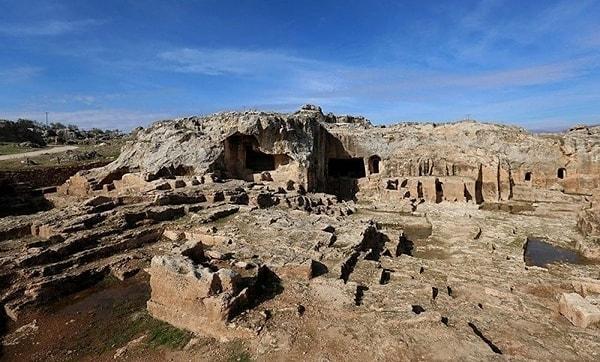
Hilar Cave, is a natural wonder located in the district of Lice, about 30 km away from the city center of Diyarbakır. The cave is an important tourist attraction in the region and has been designated as a protected area by the government of Turkey due to its unique geological features and historical significance. The cave is believed to have formed millions of years ago as a result of the erosion of limestone rocks by underground water sources.
Hilar Cave is known for its extensive network of underground chambers, narrow passages, and stunning rock formations. It has a total length of 2.5 km, and visitors can explore the first 700 meters of the cave, which is open to the public. The cave has been used as a place of worship by various civilizations throughout history, including the Assyrians, Romans, and early Christians. There are also numerous inscriptions, carvings, and paintings on the walls of the cave, some of which date back to the Hellenistic period. Today, visitors can take a guided tour of the cave, which includes a visit to the main chamber, known as the 'Hall of Dreams,' where they can admire the beautiful stalactites and stalagmites that decorate the cave's interior.
Çayönü Mound
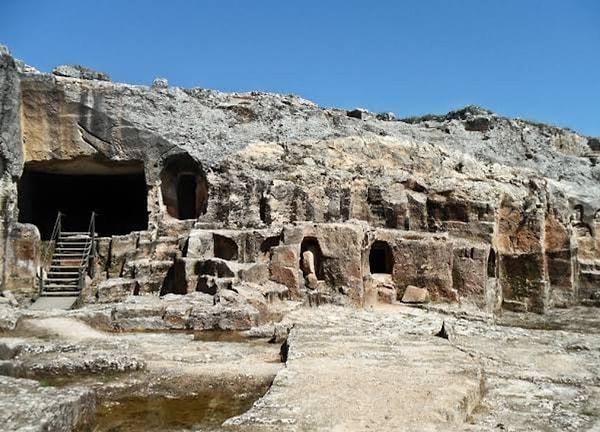
Çayönü mound is an archaeological site located in the southeastern region of Turkey, near the city of Diyarbakır. It was first excavated in the 1960s and 1970s and is known for its Neolithic settlements that date back to around 7200-6600 BCE. The mound itself is around 18 meters high and covers an area of over 20 hectares. The site is particularly significant because it offers insights into the early stages of agriculture and animal domestication in the Near East.
One of the most interesting features of the Çayönü mound is the remains of the earliest known temple complex in the region. This temple, which dates back to around 7000 BCE, was a large rectangular building that was divided into different rooms. The most important room was the central sanctuary, which contained a large stone basin that was used for religious ceremonies. The temple was also surrounded by a number of smaller structures that may have been used for various religious or administrative purposes. The discovery of this temple complex has led archaeologists to speculate about the importance of religion and ritual in early Neolithic societies, and how it may have influenced the development of agriculture and social organization.
Virgin Mary Church
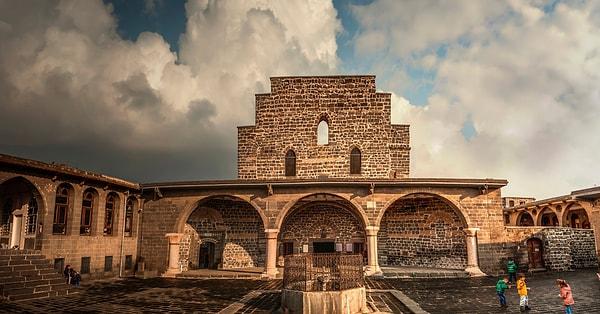
Virgin Mary Church is a historic church located in Diyarbakır. It is believed to have been built in the 4th century AD, during the Roman Empire, and is one of the oldest churches in the region. The church was dedicated to Mother Mary, and it is said to have been built on the site where she gave birth to Jesus. The church underwent several renovations over the years, and it was expanded during the Byzantine era. It served as a significant religious center for the Christian community in Diyarbakır until the 20th century when the city's demographics changed due to various political and social events.
Virgin Mary Church stands as a symbol of Diyarbakır's rich history and cultural heritage. It is a popular tourist destination and attracts visitors from all over the world. The church's architectural style is a mix of Byzantine and Ottoman influences, reflecting the city's diverse cultural and religious history. Despite its historical significance, the church has faced significant damage over the years, and restoration efforts have been ongoing. Nevertheless, the Mother Mary Church remains a symbol of hope and resilience for the people of Diyarbakır, who are proud of their heritage and determined to preserve it for future generations.
Diyarbakır Archaeological Museum
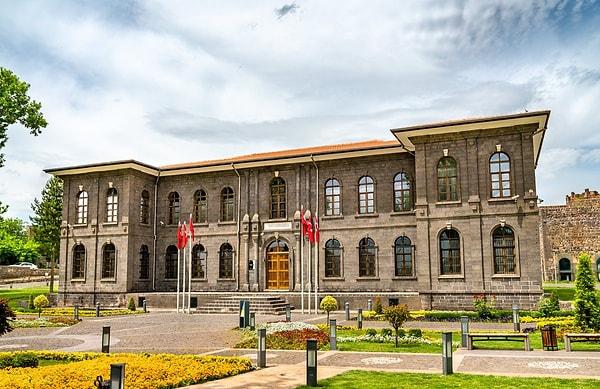
The Diyarbakır Archaeological Museum is a fascinating museum in Diyarbakır. The museum showcases artifacts from various historical periods, including the Neolithic, Assyrian, Roman, Byzantine, and Ottoman eras. The museum's exhibits are housed in a historic building that was originally constructed in the early 16th century as a caravanserai, or roadside inn, during the Ottoman Empire. The building was later converted into a prison in the 19th century and served as such until the 1970s. After extensive renovations, the building was transformed into the museum it is today and opened to the public in 1989.
The museum's collections include a wide range of artifacts, such as pottery, coins, jewelry, and sculptures. One of the most notable exhibits is the Roman-era mosaics, which were discovered in the ancient city of Amida, now known as Diyarbakır. The mosaics depict scenes from daily life, such as hunting and fishing, as well as mythological figures like Medusa. Another highlight of the museum is the Assyrian section, which contains reliefs and statues from the ancient city of Nineveh. Overall, the Diyarbakır Archaeological Museum is a must-visit destination for anyone interested in the rich history of Turkey and the wider region.
Surp Giragos Armenian Church
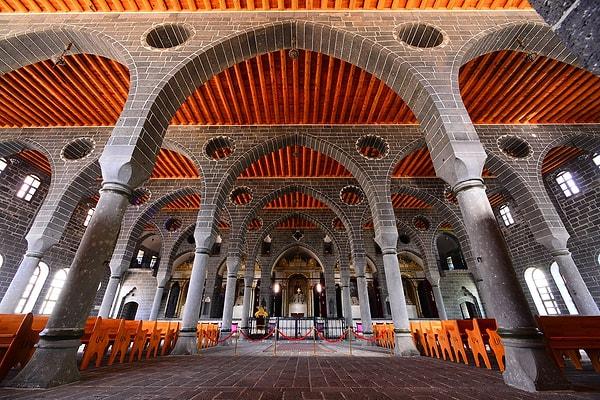
Surp Giragos Armenian Church, also known as the Holy Giragos Church, is a historic Armenian church located in the city of Diyarbakır in southeastern Turkey. The church was built in the 16th century and served as the spiritual center of the Armenian community in Diyarbakır for centuries. It is considered one of the largest and most beautiful Armenian churches.
Surp Giragos Armenian Church underwent a major restoration project between 2009 and 2011, which was funded by the Turkish government. The restoration was carried out in cooperation with the Armenian Patriarchate of Istanbul and the Diyarbakır Municipality. The restored church was reopened in 2011 and now serves as a symbol of reconciliation and cooperation between the Turkish government and the Armenian community. Today, the St. Giragos Armenian Church is an important cultural and historical landmark in Diyarbakır, attracting visitors from all over the world.
Keşfet ile ziyaret ettiğin tüm kategorileri tek akışta gör!

Send Comment